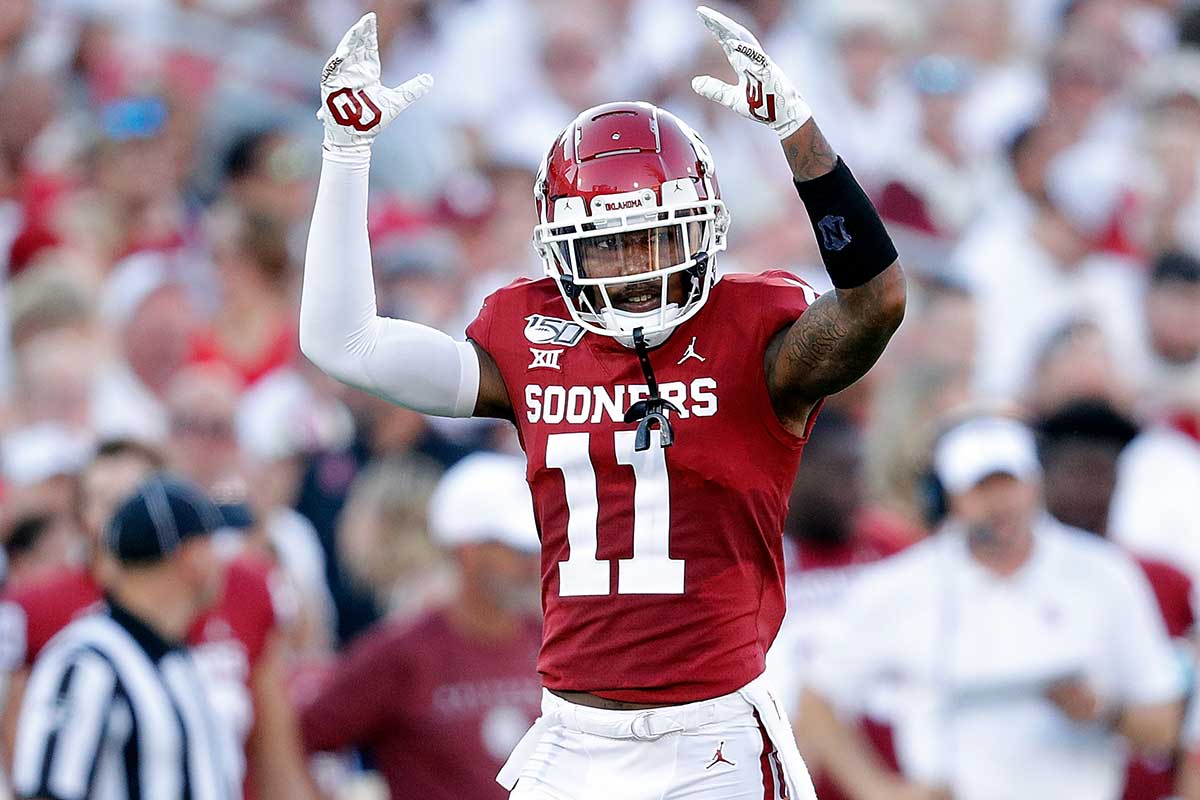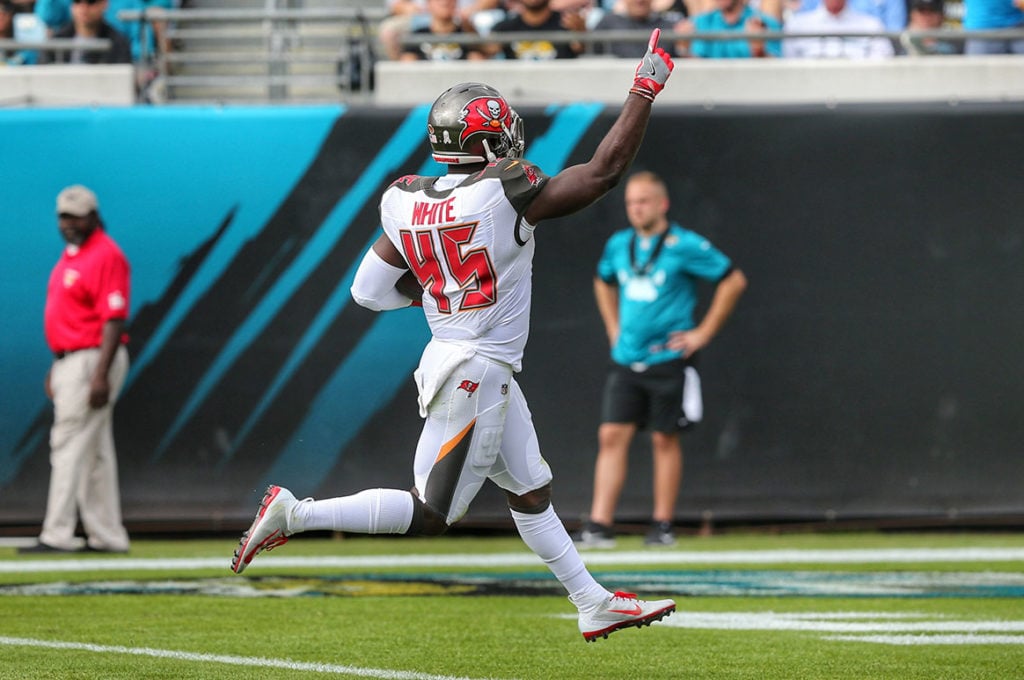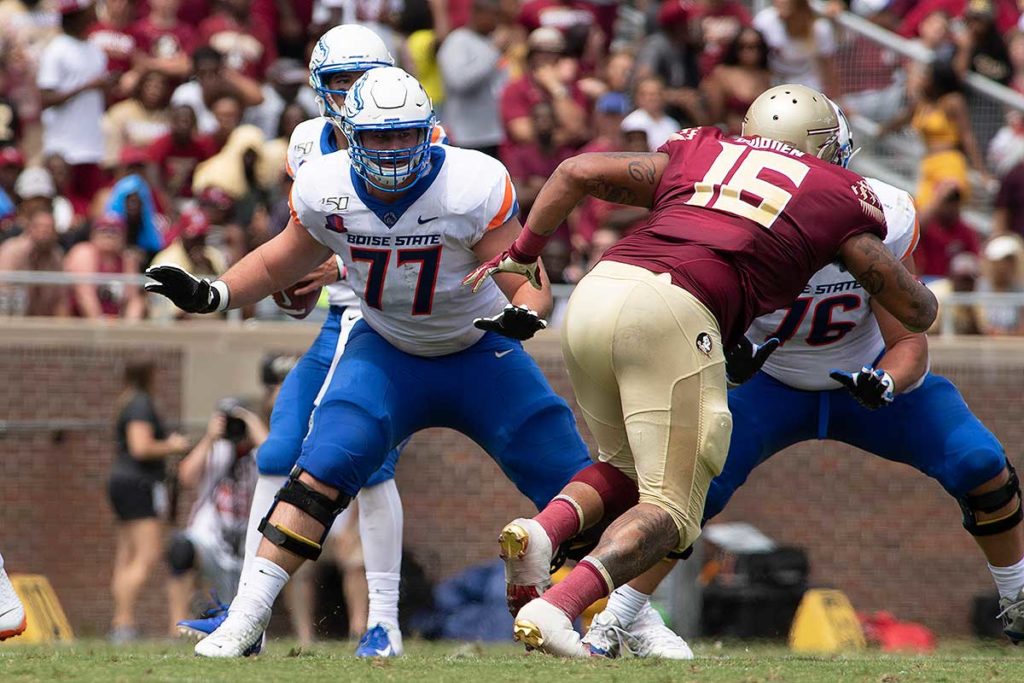The Bucs top three cornerbacks appear all but set in stone for the 2020 season, as third-year pro Carlton Davis looks to start opposite second-year corner Jamel Dean on the outside, while Dean’s fellow 2019 draftee Sean Murphy-Bunting continues his transition to the slot.
Behind those three, the race for playing time will be wide open. Right now, recently re-signed Ryan Smith and third-year corner M.J. Stewart figure to be the favorites to fill the last two corner spots, but Smith’s value really comes on special teams, and Stewart has struggled mightily over the past two seasons.
Despite being an undrafted free agent, the door is wide open for Oklahoma’s Parnell Motley to earn himself a roster spot. A scrappy competitor despite his slender 6-0, 183-pound frame, Motley has the length (31.5-inch arms) and intensity need to play in a press-man scheme in the NFL. But does he have the technique and athleticism?
Motley faced a murderer’s row of wide receivers this past season at Oklahoma, including Baylor’s Denzel Mims, TCU’s Jalen Reagor and LSU’s Ja’Marr Chase. He didn’t shadow No. 1s all the time for Oklahoma, but he did see a number of reps against each of these receivers, especially Mims.
Motley’s strengths are his instincts and awareness in coverage. He has a natural feel for where routes break, when a receiver is decelerating and what patterns could be coming based on down/distance and alignment. Because of this, if you don’t challenge him with high-end explosiveness or fakes in your route stems, Motley can sit right in your hip pocket the entire rep.
Gotta love Motley’s mental processing on that last rep, to come off his route in man coverage and cut the scrambling quarterback down around the knees. We’ll get to more of his outstanding awareness in a moment.
As you can see, when Motley is under control and not given a ton to think about in terms of fakes or creative releases, he has plenty of ability to latch onto receivers and discourage throws in his direction simply with excellent positioning.
There’s a lot of value in that, but in the NFL guys are going to challenge him with athleticism, long speed and manipulative footwork a lot more than Mims did. The big Baylor receiver simply wasn’t a very detailed player in college, and therefore spent most of the game getting locked down by the more technical Motley.
Motley isn’t a mauling cornerback, but he’s plenty physical given his slight frame, and loves to change up his press technique to keep receivers guessing. This two-handed punch is a risky move, but if you land it, the receiver’s release and subsequent route are essentially ruined. Motley will also opt for a quick one-handed jab at times, to catch an unsuspecting receiver mid-release and slow his progress off the ball.
The risk element of these moves will also leave him in tough spots, especially against elite athletes. What I worry about with Motley is that when he is attacked with speed and explosiveness, which Mims has but rarely employed during his college career, that is when the Oklahoma corner struggles.
For example, TCU wide receiver Jalen Reagor presented a whole different batch of problems for Motley with his play speed and burst out of route breaks.
Literally made Motley fall down trying to match Reagor’s acceleration as the route breaks to the field. He’s a little bit stiff laterally, and those weaknesses really get exposed against high-end athletes.
As soon as Reagor gets Motley to open to the sideline, the corner is toast. He simply doesn’t have that kind of fluidity to flip his hips and accelerate vertically with an athlete like Reagor. Instead he has to grab the receiver to prevent a likely touchdown. That’s another bad habit for Motley, who was flagged 15 times over the past two seasons, including four pass interference penalties last year, according to The Athletic’s Dane Brugler.
Another limitation of Motley’s game is that he appears to be at his best in press man coverage, with some concerns showing up whenever he plays off the line of scrimmage. Motley’s field awareness is excellent for zone, but he’s slow to break on balls in front of him due to a lack of twitch in his game, and despite his physicality, he will miss tackles against bigger targets in the passing game.
See the big hitch when he comes out of his pedal? His reaction time is fine, he just isn’t an explosive athlete and some of his transitions can be labored. Add to that some questionable open-field tackling, mostly due to size and strength limitations, and Motley could get exposed when the coverage scheme shifts.
Having said that, the Bucs are a press-man defense above all else, so Motley should fit in well in Tampa. There are limitations to his game in coverage, but as an extra defensive back he brings a natural feel for staying tethered to receivers in man coverage, as well as the ability to get his hands on lots of passes. Motley’s six interceptions and 39 pass breakups over the past three seasons made him one of the most impactful defensive backs in the Big 12.
Unfortunately, when challenged vertically with his back to the ball, Motley tends to panic and grab at the receiver rather than turning and finding the football. While most of his game is played under control, this uncharacteristic flaw makes Motley a target for big plays and penalties down the field, even when he’s in good position to make a play of his own.
Another reason to be worried about Motley in high-point situations down the field? Not only does he have trouble finding the ball with his back to it, but he also lacks the ability to turn and elevate. Motley’s 30-inch vertical at Oklahoma’s pro day would have been tied for the seventh-worst vertical jump for a cornerback in recorded NFL Scouting Combine history, per Mock Draftable.
One of my favorite things about Motley is his awareness and football IQ. Even when matched up in coverage, Motley is a consistently solid run defender who won’t hesitate to come downhill and hit when he reads run.
Good chance that’s a touchdown if Motley doesn’t come off his guy and make a tackle as the back heads toward the pylon. Big play in the red zone, only made possible by the corner’s eyes staying active.
You’d love for Motley to make this tackle, but his ability to identify a lack of threats in his zone and ID the screen quickly allows him to turn the runner back inside to his fellow defenders, forcing him away from the sideline. Motley also has zero hesitation in getting involved in a potential three-way collision with a massive offensive lineman and the back, dipping under most of the block to attempt to corral the runner.
While there are clear limitations to Motley’s game that will prevent him from being a preferable starter in the NFL, he’s tough and technical enough to be a solid depth defensive back, capable of stepping into some playing time in case of injury. I’d rather roll out a limited athlete with good technique, body control and ball skills in man coverage in the event of an injury than the other way around.
Motley has very little upside, but given the Bucs lack of ideal developmental cornerbacks and their relative youth at the position already, that really shouldn’t be a concern for the organization. Finding a depth corner that could play early and not be totally overwhelmed in the case of an injury is a luxury I didn’t expect the team to find in undrafted free agency, but here we are.
In some defensive backfields, Motley may be a long shot to make the final roster, but probably not in Tampa Bay. Even if Smith is considered a lock to make the final 55 due to his special teams prowess, Motley essentially just has to beat out Stewart, Mazzi Wilkins, John Franklin and any other unknown upstarts to seize control of the team’s fifth cornerback spot. If the Bucs keep six cornerbacks as they did last season, which seems likely given the importance of the position, Motley’s chances of sticking on the roster will look even better.
Jon Ledyard is PewterReport.com's newest Bucs beat writer and has experience covering the Pittsburgh Steelers as a beat writer and analyzing the NFL Draft for several draft websites, including The Draft Network. Follow Ledyard on Twitter at @LedyardNFLDraft




